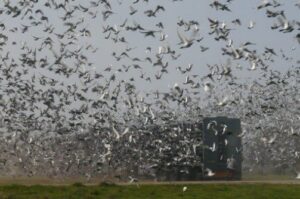 This section is intended to define pigeon racing at the combine or federation level. What is a combine and how is it organized? A combine is a coalition of clubs that come together to compete in the same race or races. Each club maintain it’s own identity but the field of competition is then increased as members can then compete at both the club and combine level. Some combines are broken down further into federations which are a smaller grouping of clubs. Though the racing pigeons are all in the same race, the results are broken down by club, federation and combine. Just as a club has officer positions and a race secretary, there are also officer positions at the combine level. Meetings are necessary at both the club and combine level to make yearly decisions. Here in the Midwest, we have our club the CIRPC, which competes in a the NE/IA Combine with ORPA and Sioux City. For long distance races 400-600 miles, our combine clubs also compete in the Husker Hawkeye Combine which consists of 9 clubs from Nebraska and Iowa. In respect to long distance racing, the NE/IA Combine is a federation within the HHC.
This section is intended to define pigeon racing at the combine or federation level. What is a combine and how is it organized? A combine is a coalition of clubs that come together to compete in the same race or races. Each club maintain it’s own identity but the field of competition is then increased as members can then compete at both the club and combine level. Some combines are broken down further into federations which are a smaller grouping of clubs. Though the racing pigeons are all in the same race, the results are broken down by club, federation and combine. Just as a club has officer positions and a race secretary, there are also officer positions at the combine level. Meetings are necessary at both the club and combine level to make yearly decisions. Here in the Midwest, we have our club the CIRPC, which competes in a the NE/IA Combine with ORPA and Sioux City. For long distance races 400-600 miles, our combine clubs also compete in the Husker Hawkeye Combine which consists of 9 clubs from Nebraska and Iowa. In respect to long distance racing, the NE/IA Combine is a federation within the HHC.
The Pros
1. Costs: The process of shipping races is no different for clubs than shipping is for any business. It cost the same to send a truck down the road weather it is entirely full of freight or if it only has two or three boxes. In this day and age of rising cost and tougher economy, a lot of clubs have had to really struggle with the issue of shipping. When clubs form a combine that also includes mutual shipping, if it makes for more efficient and cheaper per ca-pita cost for shipping, it is a very strong benefit for all involved.
2. Awards: It’s always great to win or score toward the top in a club race. To score towards the top or win a combine race is even better. Winning against a field of 700 is always more prestigious than winning against a field of say 100-200 pigeons. For national awards, the best performance at club or combine level is often used for computation. Having this added level of competition and scoring well will reap better rewards in standings for national awards.
3. Increased Fellowship: A greater number of fanciers together in an organization increases opportunities to form friendships and fellowship in the sport. When racing pigeon fanciers are in mid season, there is little time for anything other than racing. After racing, between seasons when it’s time to conduct combine and club business is when we get to spend time with other fanciers. It’s networking like anything else and a combine allows for greater personal networking within the sport.
The Cons
1. Cost: I previously mentioned this as a Pro, but it is also a Con. As with anything else, it takes money to run a combine. There is the additional cost for awards and maintenance. This costs must come from the individual clubs in the form of combine dues.
2. Politics: There are politics a the club level and also at the combine level. Politics are a nature of the beast. We all want to vote in what favors us as a fancier and individual competitor. Some times, we need to vote in what benefits the club or combine. When ever you have a large group of people with differing opinions, desires, needs and visions, there will be politics. Sometimes politics can become so frustrating that some pigeon racing fanciers want to just throw in the towel. Politics will never go away, and at times, there are not a lot of differences and it’s not much of a nuisance. When you become part of a larger organization such as a combine, you are adding another level of politics.
3. Calling Races: When the pigeons have headed down the road or are about to head down the road and the weather is predicted to be rough or it’s raining almost everywhere, it some times is really just the right thing to cancel or postpone a race. At the club level, this the decision of the race secretary. If you call it and the weather clears, everyone is mad. If you don’t call it and the weather really gets bad, someone is going to be mad. There really is no winning. When you add in a combine level, you also have an increased number of people that won’t agree with the decision to call a race. Since more than one club is involved it has happened where a club wants to cancel but either the power is in the hands of another member club or the other member clubs wish to race. In regards to calling a race it is more complicated and there is less control than at the club level.
4. Obligations: When ever you are part of a greater organization, there are going to be obligations. There are officers positions at the combine level that need to be filled and each require hard work. There are commitments for shipping crates and additional dead lines for getting race results to the right people. In the HHC a club every year must host a show for the HHC and another club must host the all to one loft futurity. When you form a larger organization, you will acquire additional obligations.
5. Greater fronts: Here in the Midwest a few cities have more than one club, but for the most parts, our birds are racing to entirely different cities and towns. This increases both the width and depth of the field or front of racing. This can be a negative when birds are not breaking and fly way of course following race birds from another club. In a tough race, it can increase losses. This goes hand in hand with the benefit of having a larger field of pigeons as a positive. Every rose has a thorn you might say. For us it means having what I would say is almost or might be the widest racing front in the United States.
Summary
Despite having listed more cons than pros, it is my opinion that the more cost efficient we make pigeon racing and the better we make the level of rewards, both greatly out weighs any cons figured in the equation. I think becoming a member of the HHC is one of the best things that has happened to my club. There are a lot of fanciers that were totally unknown to me before we joined this combine. There are also a lot of really good people involved in making this combine work. I think the HHC is a great combine because the clubs involved genuinely are committed to reducing the cost of shipping long distance races so that we can preserve them, have a good field of competition, and not let greed ruin this aspect of our sport.
Click here to post your comments!
pigeon racing, racing pigeon, racing pigeons, race pigeon, race pigeons, racing homer, racing homers, pigeons racing, pigeon, pigeons, homing pigeons, homing pigeon, pigeons for sale, pigeon auction, pigeon forum, pigeon racing pigeon, pigeon racing pigeons


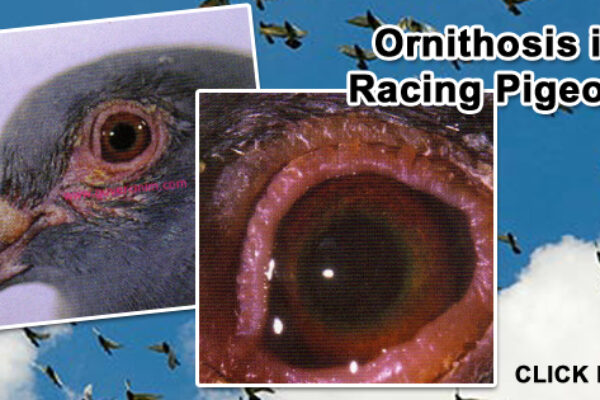
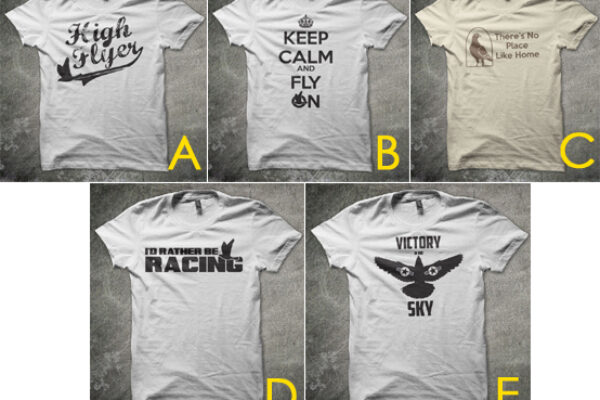
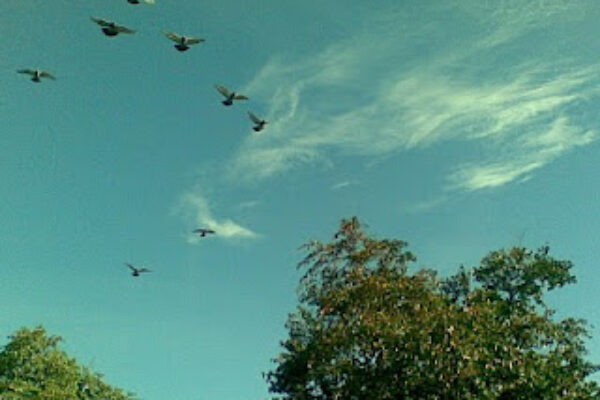

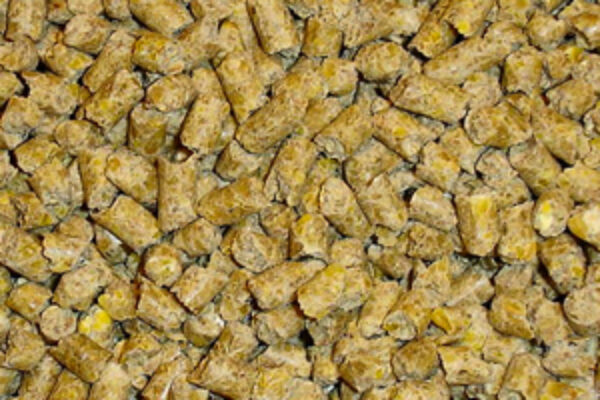


their should not one club in. charge of all inçombine atlease three on four persons in diff clubs to ok all races
I would like to see a 20 bird limit you can take better care of the birds and you will bred a better race bird not like some flyers need to ship 40 birds in a race to hope to get one my combine has a 40 bird limit and some guys have two lofts in one yard are front is short is 53 miles and long is 150 on a 100 mile race I fly 122 miles you don’t need a lot to win you need good health and time with the birds.
I do not like a big front but because of the sport dyeing we have to open the front up, however; there comes a time when it is opened up to much. most of the time I find the problem is with people only caring about long distance races which do not participate in other OB races and especially the YB series. people like this are killing the sport from within we don’t have to worry about outsiders. I am watching which way our sport will go.
Hi Jim i use to think that way but not any more good birds that are in good shape or form that
are motivated for the job will show you what good pigeons are all about a bad pigeon is still a bad
pigeon no matter how you fly them.And old friend of mine he was a very good flier but is gone now
this is what he said its as true now as it was when he told me in !978 if you breed 30 pigeons you
will be lucky to get one really good one you will get steady pigeons but not what we strive for
thats why some of the big name fliers that have the room breed 100 to 200 pigeons most of
us cannot do this also good breeders also breed bad pigeons they are not all good
and it seems like today fliers don’t want compeition any any more but i also believe
in a fair playing field for all if you ship 30 birds to a race thats what you are allowed
Regards Brad.
………………….I don’t think any of our 4 clubs could survive if we didn’t have the combines that are invovlved.
I smiled when I read the awards section and 700 birds were mentioned. The reason is that my club has frequently more than 1000 pigeons per race. Our fed frequently has more than 20,000 birds per race so it’s difficult to compete. The main drawback is that liberation is beyond the club control and just more than a week ago the birds were liberated in poor visibility resulting in around 50% loss. Problem is that fed officials deny poor visibility but the evidence is there.
I just do not like a BIG FRONT!!!i It increase losses.